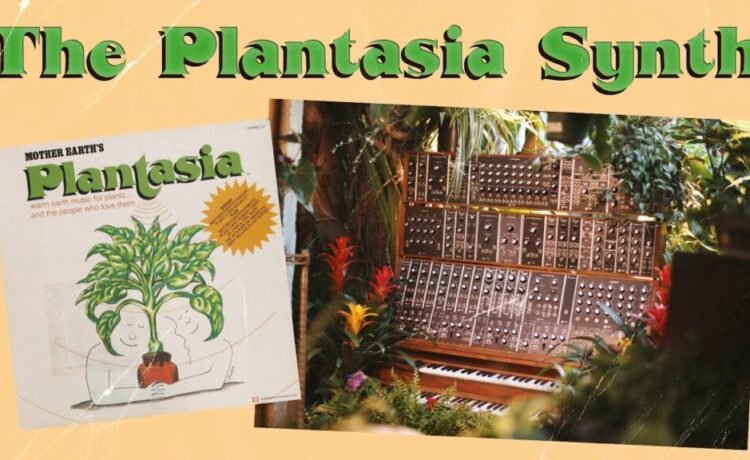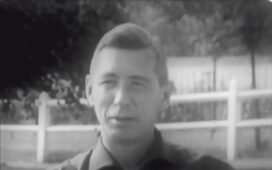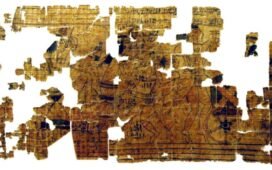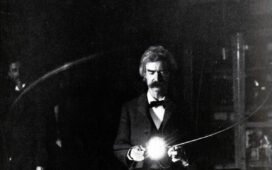In 1973, Peter Tompkins and Christopher Bird’s The Secret Life of Plants became a bestseller. Drawing from the results of scientific studies about whose replicability we may now feel certain doubts, the book suggested that emotion, and indeed sentience, belong not just to humans and animals, but also to, say, the potted fern in your living room. Many of Tompkins and Bird’s readers must have owned such a plant, and probably a variety of others besides, given the nineteen-seventies’ fad for domestic vegetation. Though ridiculed in the major media, The Secret Life of Plants proved sufficiently in tune with its time to inspire a feature-length documentary film with a high-tech soundtrack by none other than Stevie Wonder.
Did Wonder ever hear the album Mother Earth’s Plantasia? Subtitled Warm Earth Music for Plants… and the People Who Love Them, the album also features electronic compositions — exclusively electronic compositions, in fact, performed entirely with a Moog synthesizer. Its composer Mort Garson had been a versatile professional in the world of what was then called “easy listening,” and worked on the writing, arrangement, or production of popular songs like Brenda Lee’s “Dynamite,” Ruby & The Romantics’ “Our Day Will Come,” The Sandpipers’ “Guantanamera,” and Bill Withers’ “Three Nights and a Morning.” Upon meeting Robert Moog himself at a convention in 1967, Garson seems to have undergone a conversion, becoming one of the first composers to dedicate himself to exploring the musical potential of the then-novel synthesizer technology.
The music Garson went on to make with his Moog reflects the zeitgeist: there was Electronic Hair Pieces, with versions of numbers from the musical Hair, a series of twelve discs based on the signs of the zodiac, and even the score that accompanied the Apollo 11 moon landing broadcast. Of particular interest to early electronic music buffs is Black Mass, for which Garson took the pseudonym Lucifer, and which ought to be worth adding to one’s library with Halloween coming up.
Mother Earth’s Plantasia was released in 1976, three years before the Secret Life of Plants movie, though released may not be the right word: it could only be obtained free with purchase of either a houseplant from a shop called Mother Earth on Melrose Avenue in Los Angeles or a Simmons mattress from Sears. As music YouTuber David Hartley explains in his latest video, Garson was asked to create an album of music conducive to plant growth by Mother Earth’s owners, Lynn and Joel Rapp.
For decades thereafter, Mother Earth’s Plantasia could presumably be encountered by serious crate-diggers: the Pharcyde, for example, sampled one of its tracks on “Guestlist” in 2000. But it was only in the twenty-tens, after the establishment of YouTube and its obscure-music-uploading culture, that the album found an audience appreciative enough to inspire a proper release. (Its rediscovery played out similarly to that of Mariya Takeuchi’s “Plastic Love,” the golden tip of the Japanese city pop revival.) Its tracks eventually even appeared in ad campaigns for TurboTax and the French supermarket chain Intermarché. To listeners today, they may sound uncannily like video game music as it would take shape in the eighties, albeit with a soft-edged analog texture. As far as whether it actually helps plants grow, even Joel Rapp’s liner notes can only manage the promise that “it couldn’t possibly hurt.” But I can report that it does a decent job putting my infant twins to sleep.
Related Content:
How the Moog Synthesizer Changed the Sound of Music
Plants Emit High-Pitched Sounds When They Get Cut, or Stressed by Drought, a New Study Shows
Based in Seoul, Colin Marshall writes and broadcasts on cities, language, and culture. His projects include the Substack newsletter Books on Cities and the book The Stateless City: a Walk through 21st-Century Los Angeles. Follow him on the social network formerly known as Twitter at @colinmarshall.















